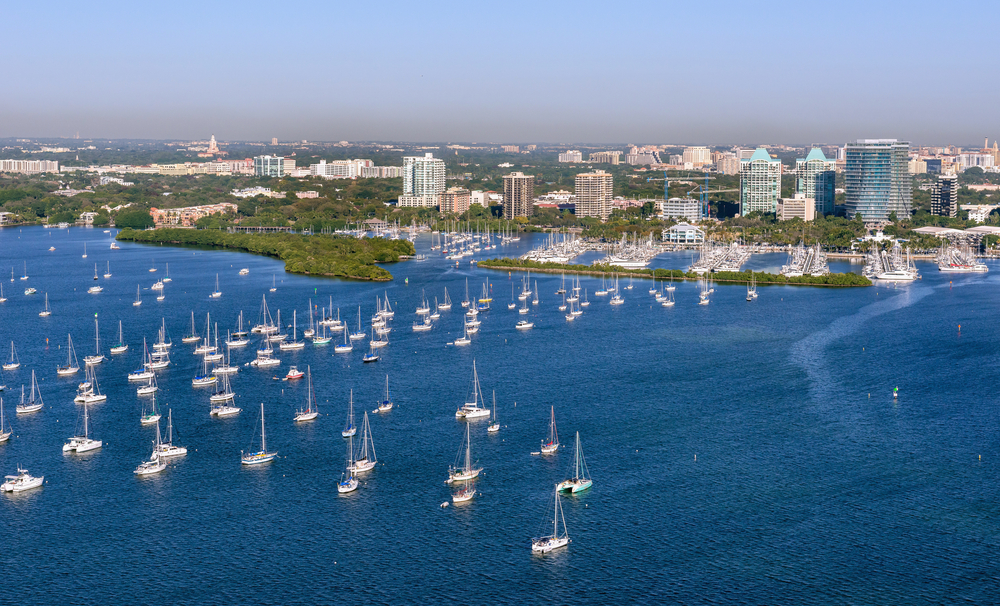Lifestyle
Will the unique culture of Miami’s Coconut Grove survive?

Coconut Grove is at risk of losing its unique history and tropical culture. Older homes are being turned into mansions of concrete and glass. Locals are fighting to reduce the size of new construction and preserve green space. (Shutterstock)
MIAMI—With its artsy vibe, lush landscapes and free-roaming peacocks, Coconut Grove has long been known as a bohemian paradise.
It’s also Miami’s oldest neighbourhood, established along the shores of Biscayne Bay in 1873 before the city existed. Located nearly 5 miles from what is now Miami’s downtown, its streets are shaded by thick canopies of trees and its housing stock includes some of Miami’s oldest homes.
But as new architecture goes up and its business district revitalizes, Coconut Grove is at risk of losing its unique history and tropical culture. Older homes are being turned into mansions of concrete and glass. Locals are fighting to reduce the size of new construction and preserve green space.
“It’s really about neighbourhood preservation, which gets into cultural preservation,” said Christine Rupp, executive director at Dade Heritage Trust, Miami-Dade County’s largest preservation organization. “People move to the Grove for the flavour of the Grove. The concern for us and residents is losing the character of Coconut Grove. This is where historic preservation comes into play.”
Visitors who want to sample the Grove’s history and culture might start on Charles Avenue, where settlers from the Bahamas lived in wood-frame, shotgun-style cottages. The Mariah Brown House, built in 1890 by a Bahamian immigrant who worked at a local inn, is now a Florida Heritage site. The neighbourhood’s Bahamian community also established the nearby Charlotte Jane Memorial Park Cemetery.
The 40-acre bayfront Barnacle State Historic Park includes a mangrove forest and The Barnacle, the oldest home in Dade County still in its original location. The 1891 house is noted for its two-story, three-sided verandah.
Other homes in the Grove were built in Mediterranean and Spanish styles during the early 1900s, including the Vizcaya Museum and Gardens, an Italian Renaissance-style villa with formal gardens and 70 rooms filled with antiques and decorative art.
Coconut Grove’s waterfront is a popular destination for fishing, boating and kayaking. CocoWalk, an open-air complex, is lined with sidewalk cafes and shops. Miami City Hall is located in a former Pan American Airways terminal at Dinner Key.
But some local attractions are flashpoints in preservation debates. Less than a mile from the Grove’s business centre, at the corner of Plaza and Palmetto, is a city-owned wooded plot dubbed Charlie’s Woods. The quirky site has a frog figurine, handwritten signage and a short trail to a seating area. It’s named for the late Charlie Cinnamon, who founded the annual Coconut Grove Arts Festival, which takes place each February (this year, Feb. 17-19). Adjacent to the woods is Cinnamon’s tiny 1919 house, a dilapidated structure that’s caught up in a preservation battle.
Another historic site whose future is under debate is the now-defunct Coconut Grove Playhouse, a Spanish Rococo-style movie theatre built in the 1920s and renovated in the 1950s as a performing arts centre. A variety of proposals to revive it are being considered.
Jorge Perez, one of the most influential names in Miami real estate, has called Coconut Grove home for over 35 years and says he’s committed to maintaining its historic charm. His company, The Related Group, along with The Terra Group, are behind the new Park Grove project, a 297-unit luxury condo development on the Coconut Grove waterfront. The project features three wavy towers, a restaurant and “lush landscaping that the Grove is known for,” Perez says, along with a park “filled with sculptures that will be very much in the spirit of the Grove.”
Meanwhile the Coconut Grove Neighborhood Conservation District has created guidelines to preserve the area’s history and landscape by protecting the tree canopy and green space along with the area’s architectural variety. And residents are promoting a Change.org petition limiting the size of new homes in single-family neighbourhoods.
That petition is supported by David Villano, who lives in a 1924 home hidden behind an oasis of plants and towering trees in an area where other historic homes are giving way to concrete-and-glass mansions with sparse landscaping.
“That lush tropical paradise, unfortunately it’s fast disappearing,” Villano said. The Grove has a reputation of being “this counterculture outpost where the iconoclast and the artistic types have long flourished. That continues to be the brand that Coconut Grove sells.” But he also sees a balance between the old and the new developments. “What really makes the Grove is not the buildings, but the people.”
Robert Lloyd, an architect with Perkins + Will, is working with the Coconut Grove Business Improvement District to create guidelines for new developments that would maintain “the DNA of the Grove” while supporting investment and growth.
“The Grove has been rediscovered in the last few years,” he said. “It is a truly great place, but great places can be fragile.”





















